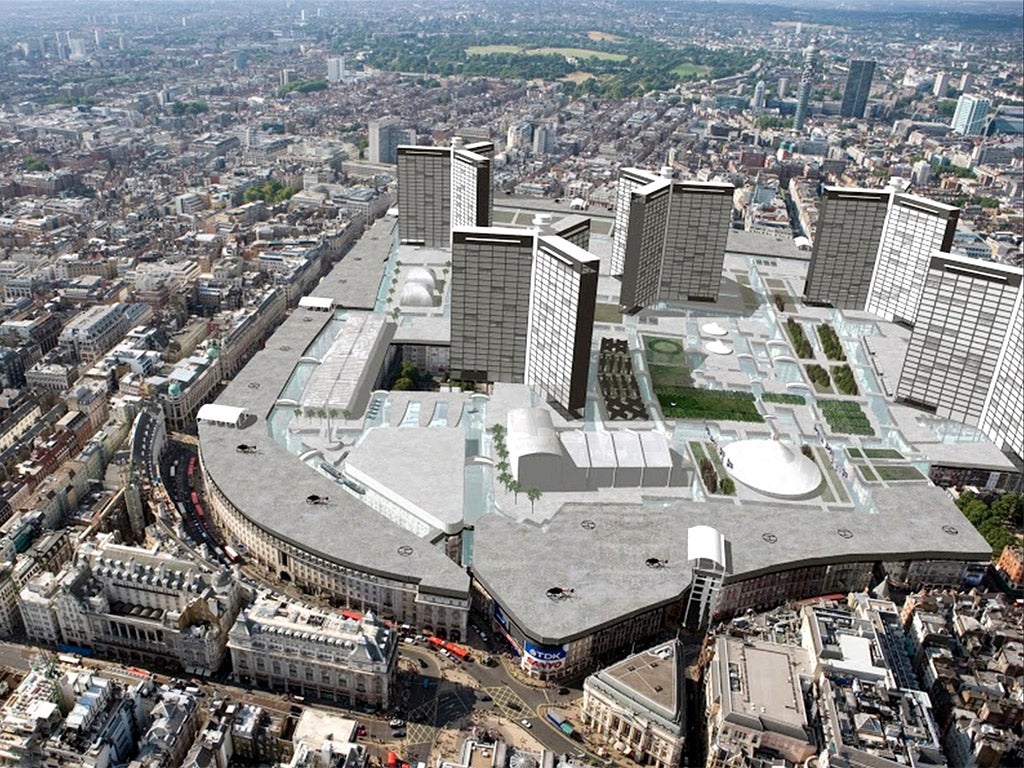Exhibition reveals how London could have looked if radical development projects from the past century were given green light
From knocking most of Covent Garden to building castles in the sky over Soho, London would look very different today if it wasn’t for conservationists

Your support helps us to tell the story
From reproductive rights to climate change to Big Tech, The Independent is on the ground when the story is developing. Whether it's investigating the financials of Elon Musk's pro-Trump PAC or producing our latest documentary, 'The A Word', which shines a light on the American women fighting for reproductive rights, we know how important it is to parse out the facts from the messaging.
At such a critical moment in US history, we need reporters on the ground. Your donation allows us to keep sending journalists to speak to both sides of the story.
The Independent is trusted by Americans across the entire political spectrum. And unlike many other quality news outlets, we choose not to lock Americans out of our reporting and analysis with paywalls. We believe quality journalism should be available to everyone, paid for by those who can afford it.
Your support makes all the difference.Elevated walkways taking pedestrians over a multi-lane highway in Piccadilly Circus, Covent Garden covered in concrete terracing, and pleasure boating in Soho. These are just a few of the radical development projects from the past century that could have “irreparably altered” London, as shown by an exhibition that opens today.
Plans to demolish some of London’s treasured historic sites, including many of the the Edwardian and Victorian buildings in Whitehall, are among those explored in Almost Lost: London’s Buildings Loved and Loathed.
It recreates the proposed replacement designs using digital maps, models and augmented reality technology, providing visitors with a glimpse of what could have been in the capital had campaigners not stepped in.
Without the protective legislation, “much more of the city we know today would be lost or irreparably altered,” said Simon Thurley, chief executive of English Heritage, adding that the exhibition “tells the story of how lucky we have been”.
Some of that fortune fell upon Carlton House Terrace, an elegant row of houses in Westminster that could have been turned into an office block in 1932. The proposals were only thwarted thanks to action by residents and the architectural press.
The most striking of all the proposed plans was that for Soho, although it never made it past the conceptual stage.
A 1954 plan by Geoffrey Jellico, Ove Arup and Edward Mills involved piecemeal demolition of Soho with a platform then built above with 24-storey towers on top alongside landscaped gardens and glass-bottomed canals that followed the path of the streets, as well as concert halls and tennis courts.
The designers were examining ways of dealing with depopulation of city centres after the Second World War, looking at pedestrianisation and landscaping, as well as using new materials and structural methods after the war.
Polly Hudson, who curated the show as founder of The Building Exploratory charitable trust, said: “Jellico talks about the vibrant area of Soho, but he doesn’t connect. It has taken us time to connect the actual retention of that character and how it connects to people, and buildings and layers of history. You can’t just knock something down and retain the character.”
Later, the public square of Piccadilly Circus came under threat from plans envisioned by Sir William Holford for the London County Council.
He proposed demolishing three-quarters of the buildings on the site – and believed the remaining buildings, including the famous sports store Lilywhites, would also come to be replaced in later years.

Sir William wanted to introduce more road lanes, with pedestrians elevated on high-level walkways. His radical ideas also envisioned four 200ft towers between Piccadilly and Leicester Square, containing hotels, offices, flats and restaurants.
After more than a decade of tweaks, the plan was ditched in the early 1970s over problems with the traffic flow requirements.
The exhibition has also digitally reconstructed the 1968 plan tabled for the overhaul of Covent Garden after the flower market left.
The local community’s protest against the proposal to demolish three-quarters of the site, as well as efforts by the conservation organisation, saved the buildings and helped tighten planning laws.
“Thanks to the campaigning efforts of our predecessors we still have a beautiful city to enjoy,” said Mr Thurley.
Other projects included Sir Leslie Martin’s plans to modernise Whitehall in the 1960s, knocking down the Treasury, Foreign Office and War Office buildings for redevelopments on three sides of Parliament Square.
The exhibition has been staged by English Heritage at Wellington Arch on Hyde Park Corner, the final show in a series marking the centenary of the organisation.
Join our commenting forum
Join thought-provoking conversations, follow other Independent readers and see their replies
Comments